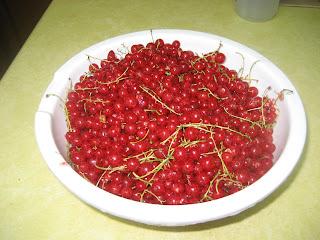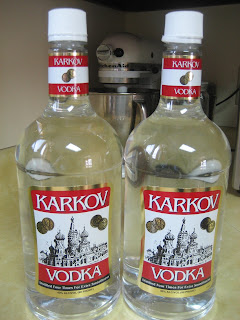Growing a Backyard Fruit Orchard
You can probably easily imagine the appeal of fresh fruit trees in your backyard. Having oranges, apples, plums, pears, and even avocados available right at your fingertips is the dream of any fresh food enthusiast. Unfortunately, very few people have the space, time, or confidence to plant numerous fruit trees in their yard. The truth is though that with even a little bit of room, some creativity, and plenty of research on the front end, you can successfully have delicious fruit year round.
I would love to claim to have come
up with these ideas, but the credit lies with a progressive thinking
organization named Dave Wilson nursery. Take a look at their website which houses a plethora of great information about
planting fruit trees in your yard. The concepts behind Backyard
Orchard Culture are truly simple; plant what you enjoy eating, keep trees to a
manageable size, embrace successive ripening, and plant what will grow in your
yard.
Planting fruits that you enjoy
eating seems like a simple concept, but a little bit of research and some
legwork will ensure that you don't have 25 years worth of Santa Rosa plums
(which you secretly despise). Many orchards and nurseries will have fruit
tasting events where they'll have available to taste different varieties of
your favorite fruits. Check with your local nursery, gardening cooperative, or
organic grocer for an event in your neighborhood.
 |
| An example of an espaliered Honeycrisp Apple tree at the University of Minnesota Landscape Arboretum. |
The most important concept of
Backyard Orchard Culture is keeping trees at a manageable size, preferably no
higher than the top of your reach. What's the point of a 40 foot tree if you
can only gather fruit from the bottom 10 feet of it? Regular vigilant pruning,
and high density planting (multiple trees close together) will create
controllable sizes of trees and maximum use of precious backyard space.
Fruit trees, like most other plants
can be trained to grow into almost any shape, even flat along a fence. My yard is approximately 1/3 of an acre, and will contain 13 fruit trees,
none more than seven feet tall, which is about as high as I can reach. Most of
which are either trained to grow in a flat shrub-like manner against a fence (this is called an espalier - see picture above) or deliberately kept to a dwarf size. I've lived in smaller yards with even more fruit trees, it's all about keeping their size manageable.
Another important concept in
Backyard Orchard culture is successive planting, planting trees with the same
(or similar fruits) that ripen at different times of the year. I have three
different varieties of apple trees planted; an early season (fruit ripens in
mid-September), a mid season (fruit ripens in late September to early October),
and a late season (fruit ripens in mid to late October).
This way instead of being inundated
over a two week stretch with bushels of apples, I've elongated the harvest
season to a couple of months. And since all of my trees are a manageable size,
I'm not going to be overwhelmed with hundreds of apples simultaneously, but
instead am going to have 40 to 50 tasty apples from each tree at each ripening
time.
The final idea is to plant what will
grow in your yard. It's no use buying a wonderful Meyer Lemon tree if it will
die within a month of being planted, or never be happy enough to produce fruit.
Check your soil type, the number of chill hours (defined as the number of hours
in late fall/early winter the temperature is below 45 degrees), and the root
stock of the plant you intend to buy will work with your yard. This will ensure
you of the best chance of success in your planting.
None of the concepts of Backyard
Orchard Culture are ground breaking, or in any way new. Gardeners have been
using them for years in one form or another. But taking them together and
applying them to planting trees in your yard should give you many years of
delicious, garden fresh fruit. Best of luck in your planting efforts!



Comments
Post a Comment